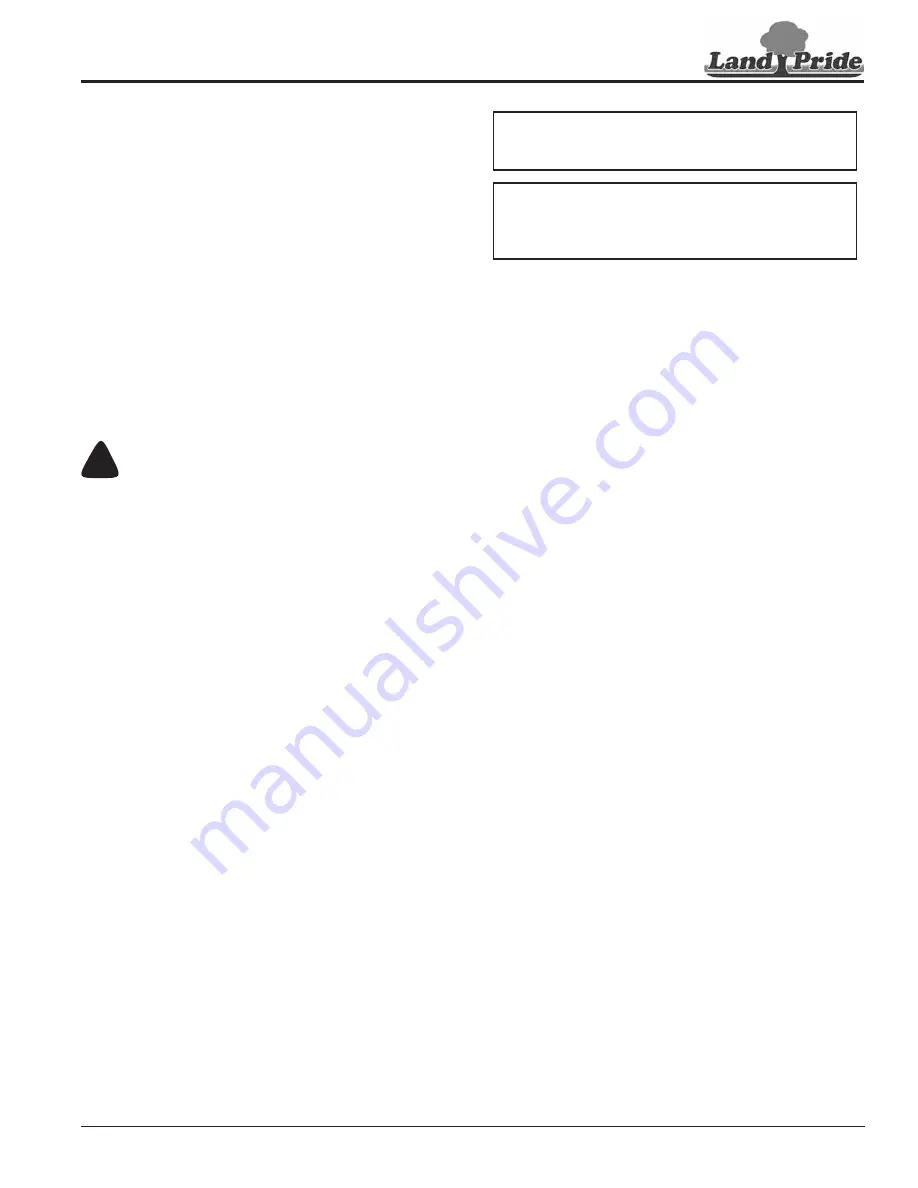
Section 2: Operating Instructions
PS1572: Primary Seeder: 313-164M:
11/5/18
11
How the Seeder Works
The following information is a brief description of how this
primary seeder works. It is included to help you
understand the operation of this seeder.
The power to drive the seeding function of this seeder
comes from the ground speed of the tractor. The seed
metering is powered by the front roller at a rate
proportional to the distance driven. This ensures that the
rate applied remains constant as ground speed is varied.
The power is transmitted via drive chains to the seed
cups. This drive can be adjusted to a high or low range to
broadcast more or less seed. The seed rate is adjustable
using the seed rate lever located at the rear of the seeder.
The seed is dropped between cast iron rollers. The front
roller crushes clods, presses down small stones and
forms a firm seedbed. The rear roller firms the soil around
the seeds.
Operating the Seeder
!
WARNING
To avoid serious injury or death:
•
Allow only persons to operate this implement who have
fully read and comprehended this manual, who have been
properly trained in the safe operation of this implement, and
who are age 16 or older. Serious injury or death can result
from the inability to read, understand, and follow
instructions provided in this manual.
•
Never carry riders on the implement or tractor. Riders can
obstruct the operator’s view, interfere with control of the
equipment, be pinched by moving components, become
entangled in rotating components, be struck by objects, be
thrown or fall from the equipment, etc.
•
Perform scheduled maintenance. Check for loose
hardware, missing parts, broken parts, structural cracks,
and excessive wear. Make repairs before putting implement
back into service. Serious breakdowns can result in injury
•
Do not use implement as a man lift or work platform. It is
not properly designed or guarded for this use.
•
Do not use implement to tow other equipment unless it is
designed with a tow hitch. Doing so can result in loss of
control and damage the equipment.
•
Do not use implement to lift objects; to pull objects such as
fence posts, stumps, etc; or to push objects. The unit is not
designed or guarded for these uses.
1.
Contact your local utility services so that they may
mark location of any under ground utility services in
the area. Thoroughly inspect the work area yourself
for buried pipelines, sprinkler heads, and any
unforeseen objects. Mark any potential hazards.
2. This seeder can be transported with a full box of
seeds. It is best not to do this unless necessary
because the increased weight does increase the
chances for problems on the road. Do not exceed 20
miles per hour.
3.
Refer to
Calibrate your
seeder sprocket speed and seed cup rate adjustment
lever based on type of seed you are using.
Calibration information is on charts (#8 & #9) located
inside of your seedbox lid (#2) or in the charts
starting on page 16.
4. Make sure each seed cup door handle is set at the
same height across the seeder. The highest position
is usually used for grass seeds.
5. Be sure all bolts and nuts are tight.
6. Be certain all guards are in place and secure.
7.
Clear the area to be seeded of rocks, branches, and
other foreign objects.
8. Never allow anyone to ride on the seeder.
9. Check that all plugs and caps have been replaced
properly.
10. Do not back up while seeder is on the ground.
11. At first begin seeding at a slow forward speed and
shift up until desired speed is achieved. Maximum
speed to plant seed will vary according to soil
conditions. Seeding should not be done in wet
conditions as soil will stick to the rollers.
12. After seeding the first 50 feet, stop and check to see
that the seeder is adjusted properly.
IMPORTANT:
Never back up with the seeder down.
This will loosen the drive chain and possibly damage
the seeder.
IMPORTANT:
Before proceeding with the first time
set-up, or before making any adjustments
mentioned in this section, make every effort to
attach the seeder to a tractor.

































